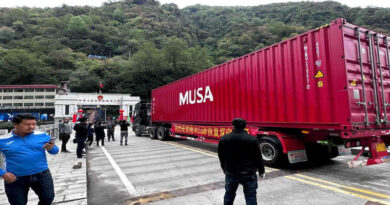Aksai Chin: China ramped up infrastructure in disputed region

By Yungdung Tsomo
DHARAMSALA, 7 June: China has increased its infrastructure work in the disputed Aksai Chin border and has established a comprehensive support system to facilitate the deployment of Chinese troops in the region, reports the London-based think-tank Chatham House.
The remote region of Aksai Chin is located in the northernmost part of the Indian subcontinent in south-central Asia. India claims it as part of Ladakh, a union territory in the Kashmir region of India while China claims it as territory of Chinese-occupied Tibet and East Turkistan.
According to the think tank, China has built extensive infrastructure and expanded its road network, outpost, and camp in contested areas.
The Chatham House, also known as ‘The Royal Institute of Foreign Affairs,’ has based its findings on satellite data analysis. Founded in 1920, it has contributed to and been pivotal in the development of world history.
Based on the analysis of satellite images, the report added that China ramped up its militarisation of the region since the military standoff with Indian troops in May 2020. China has “expanded roads, outposts, and modern weatherproof camps equipped with parking areas, solar panels, and even helipads.”
The report added that a new heliport is being built in the disputed area, away from the frontline and near the Aksai Chin Lake, this facility is associated with 18 hangars and shorts runways for use by helicopters and possible drones, which will “significantly enhance the operational capabilities “of people’s liberation army to counter Indian army.
“In the Raki Nala, a river valley south of the contested Depsang plains, China outposts are visible, potentially able to block Indian patrol in the area.
Meanwhile, at Pangong Tso a saline lake surrounded by jagged peaks and unforgiving ridge line, a bridge is also near completion and when it’s finished, it will allow the rapid deployment of Chinese force from PLA’s Rutog military garrison to the contested mountain ridges overlooking the lake”
The standoff between the two Asian giants in the Galwan Valley in eastern Ladakh in June 2020 led to a clash that killed 20 Indian soldiers and 4 Chinese soldiers.
Though India and China held multiple talks and agreed to “peacefully resolve” the border face-off, tensions between the two sides still remain at the Line of Actual Control (LAC). The border dispute between the two covers a 3,488-km-long LAC.
The McMahon Line demarcation is the current effective boundary between China and India after the Chinese occupation of Tibet. It is a demarcation line drawn on the map referred to in the Shimla Accord, a treaty signed between Britain and Tibet in 1914.






